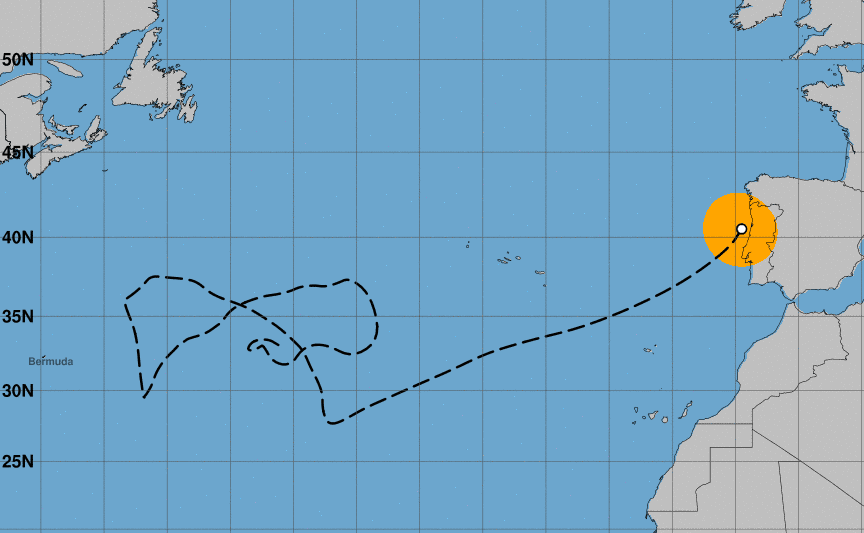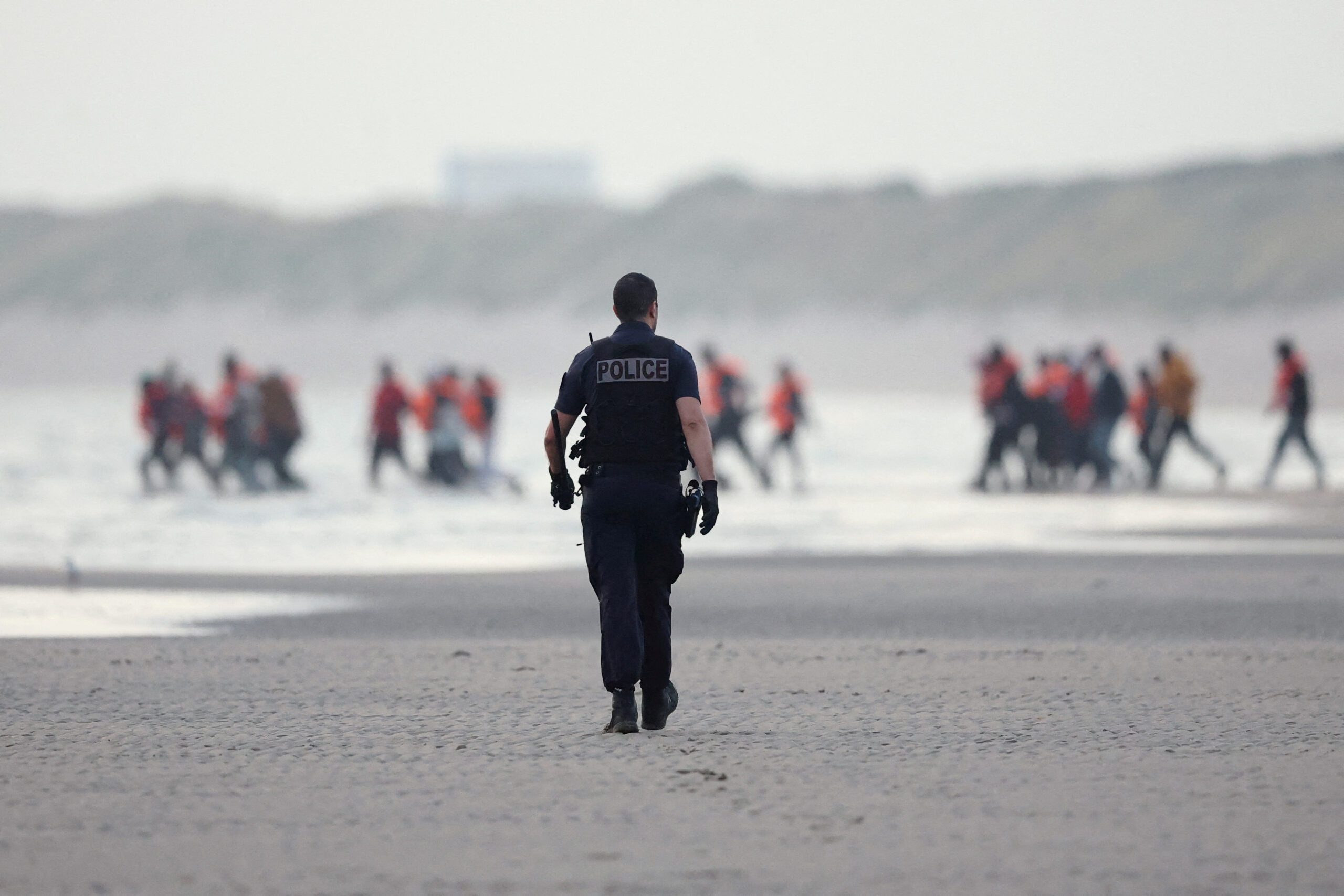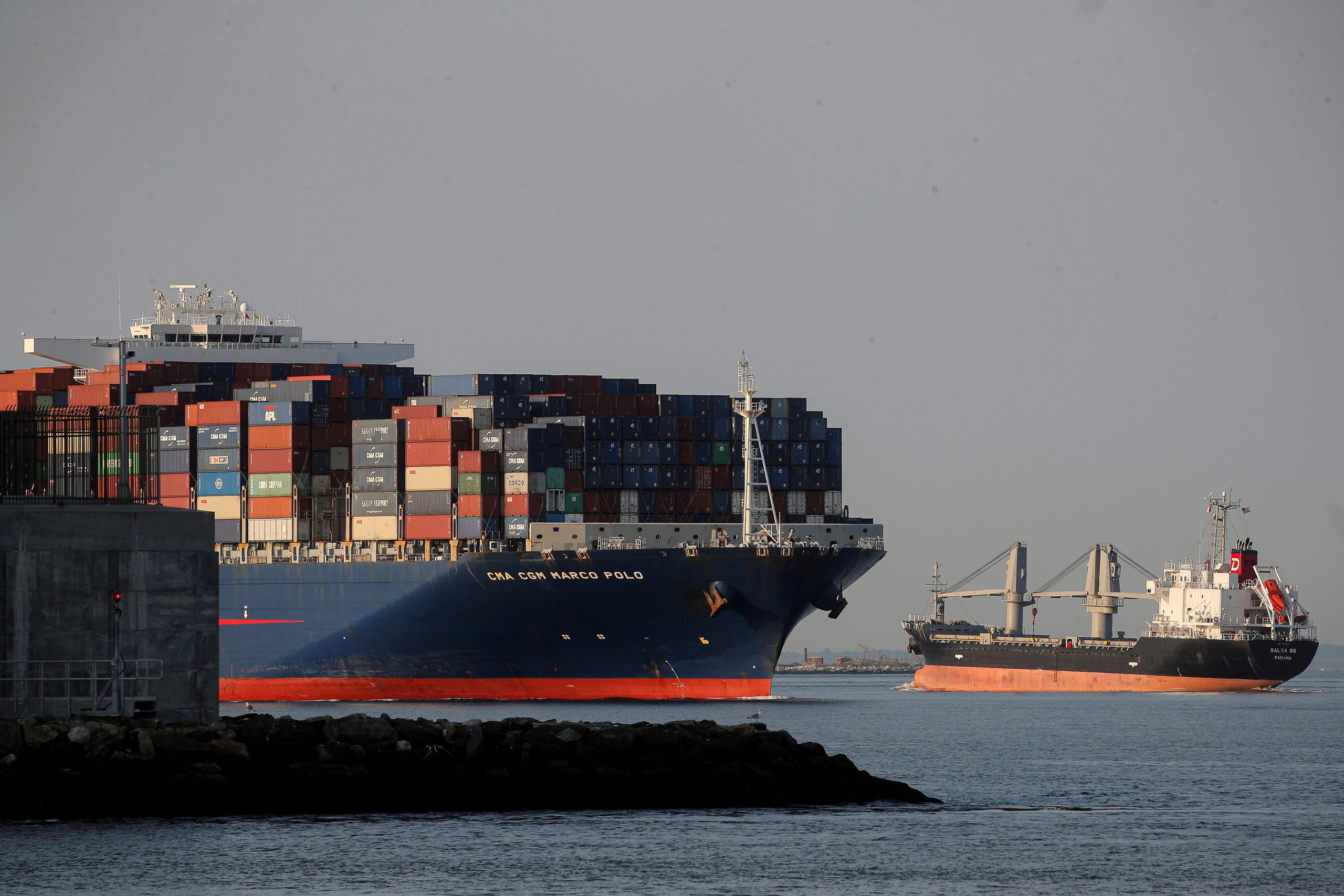
By Brian K. Sullivan (Bloomberg) — After a three-week journey around the Atlantic Ocean, Leslie was on track to hit Portugal with winds of near-hurricane force — only the third time in 176 years that a storm this powerful has made it to the Iberian Peninsula.
Storm warnings cover Portugal, according to the Portuguese Institute for Sea and Atmosphere. Leslie’s sustained winds fell to less than hurricane strength as it raced toward the coast at more than 30 mph. It is expected to make landfall within hours.
The storm “lost intensity but gained speed,” Luis Belo Costa, a commander at Portugal’s National Civil Protection Agency, said just after 8 p.m. local time on Saturday, according to daily newspaper Publico’s website. Its path has changed and it will now affect the region more to the north of Lisbon, he was cited as saying.
Leslie is forecast to be a powerful post-tropical cyclone by the time it reaches the Iberian Peninsula. After landfall, rapid weakening is anticipated, and Leslie is forecast to degenerate into a broad low pressure area over Spain in a day or so.
The storm could cause about $5 billion in economic impacts as it crosses the peninsula, according to Chuck Watson, a disaster modeler with Enki Research in Savannah, Georgia.
“Dangerous winds, surf and heavy rainfall will affect portions of Portugal and Spain,” the U.S.’s National Hurricane Center said in an advisory.
Leslie is expected to bring near hurricane-strength winds to portions of Portugal, Dan Brown, a senior hurricane specialist at the Hurricane Center, wrote in an analysis. In addition, Leslie will bring as much as 4 inches (10 centimeters) of rain.
“Whether it will be technically a tropical cyclone or not, it is going to be a big storm for them,” said Jeff Masters, co-founder of Weather Underground, an IBM company. “It’s kind of unprecedented for them.”
In 1842, Spain was hit by a large storm that scientists concluded was a hurricane in a 2008 study. On Oct. 11, 2005, Vince made landfall near Huelva, Spain, about 383 miles southwest of Madrid, as a tropical depression with sustained winds of 35 miles per hour.
A tropical storm warning has been issued for Madeira Island, an autonomous region of Portugal in the Atlantic off the African coast. Cold ocean water and wind shear will disrupt Leslie’s structure, robbing it of its tropical characteristics.
While its winds aren’t close to those with Hurricane Michael, which devastated the Florida Panhandle this week, Leslie is about 20 percent larger in size. Tropical-storm strength winds reach out 230 miles from its center, about the distance between New York and Boston, and hurricane-force winds extend 70 miles.
Leslie became a named storm on Sept. 23 and since then has wandered around the central Atlantic waxing and waning in strength. It became a hurricane again on Wednesday.
© 2018 Bloomberg L.P

 Join The Club
Join The Club












